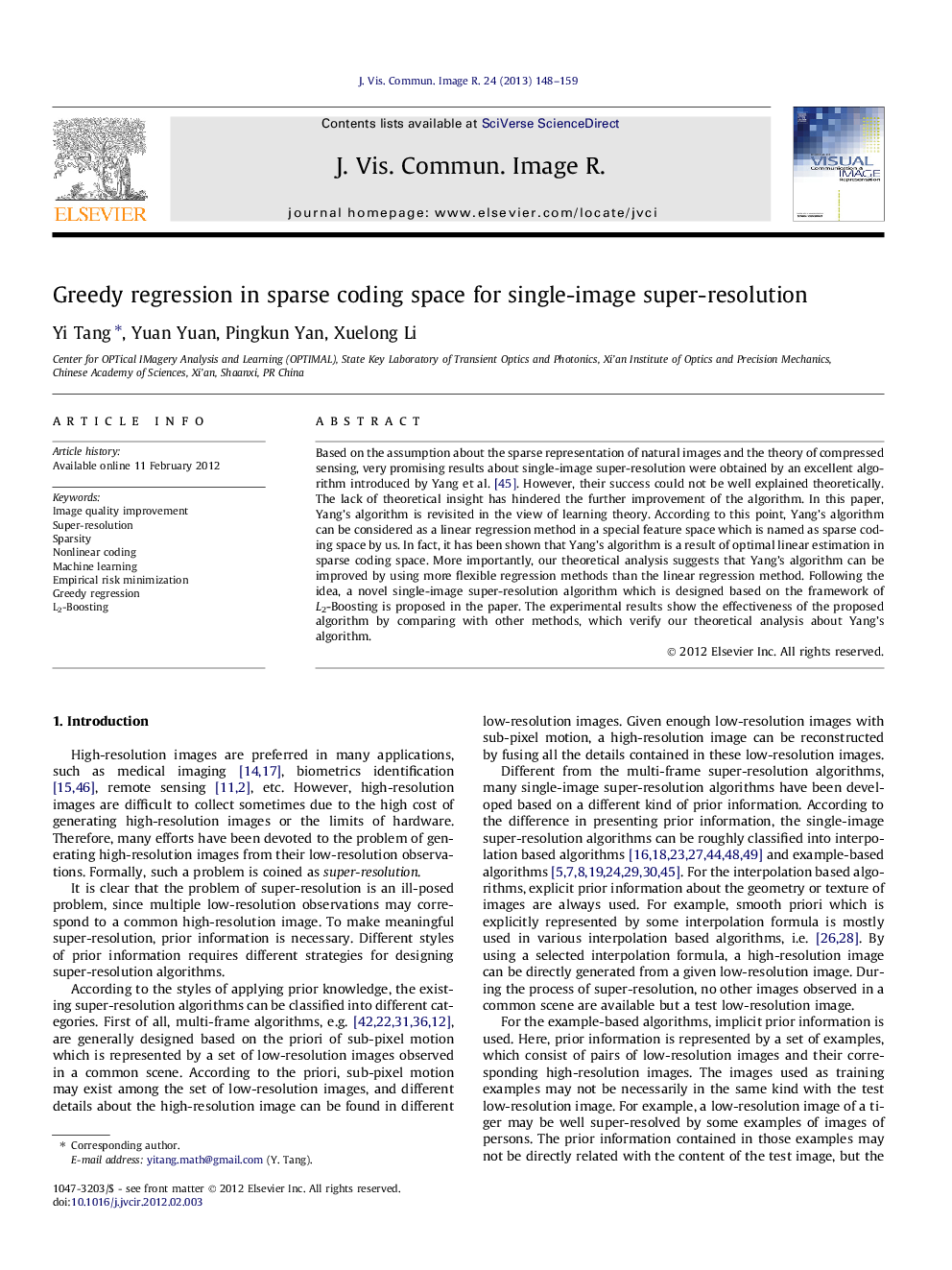| Article ID | Journal | Published Year | Pages | File Type |
|---|---|---|---|---|
| 529835 | Journal of Visual Communication and Image Representation | 2013 | 12 Pages |
Based on the assumption about the sparse representation of natural images and the theory of compressed sensing, very promising results about single-image super-resolution were obtained by an excellent algorithm introduced by Yang et al. [45]. However, their success could not be well explained theoretically. The lack of theoretical insight has hindered the further improvement of the algorithm. In this paper, Yang’s algorithm is revisited in the view of learning theory. According to this point, Yang’s algorithm can be considered as a linear regression method in a special feature space which is named as sparse coding space by us. In fact, it has been shown that Yang’s algorithm is a result of optimal linear estimation in sparse coding space. More importantly, our theoretical analysis suggests that Yang’s algorithm can be improved by using more flexible regression methods than the linear regression method. Following the idea, a novel single-image super-resolution algorithm which is designed based on the framework of L2-Boosting is proposed in the paper. The experimental results show the effectiveness of the proposed algorithm by comparing with other methods, which verify our theoretical analysis about Yang’s algorithm.
► Dictionary-based single-image super-resolution is revisited by learning-based view. ► Original dictionary-based algorithm means linear learning in sparse coding space. ► Learning-based framework is proposed for dictionary-based super-resolution. ► Greedy learning in sparse coding space shows learning-based framework’s validity.
